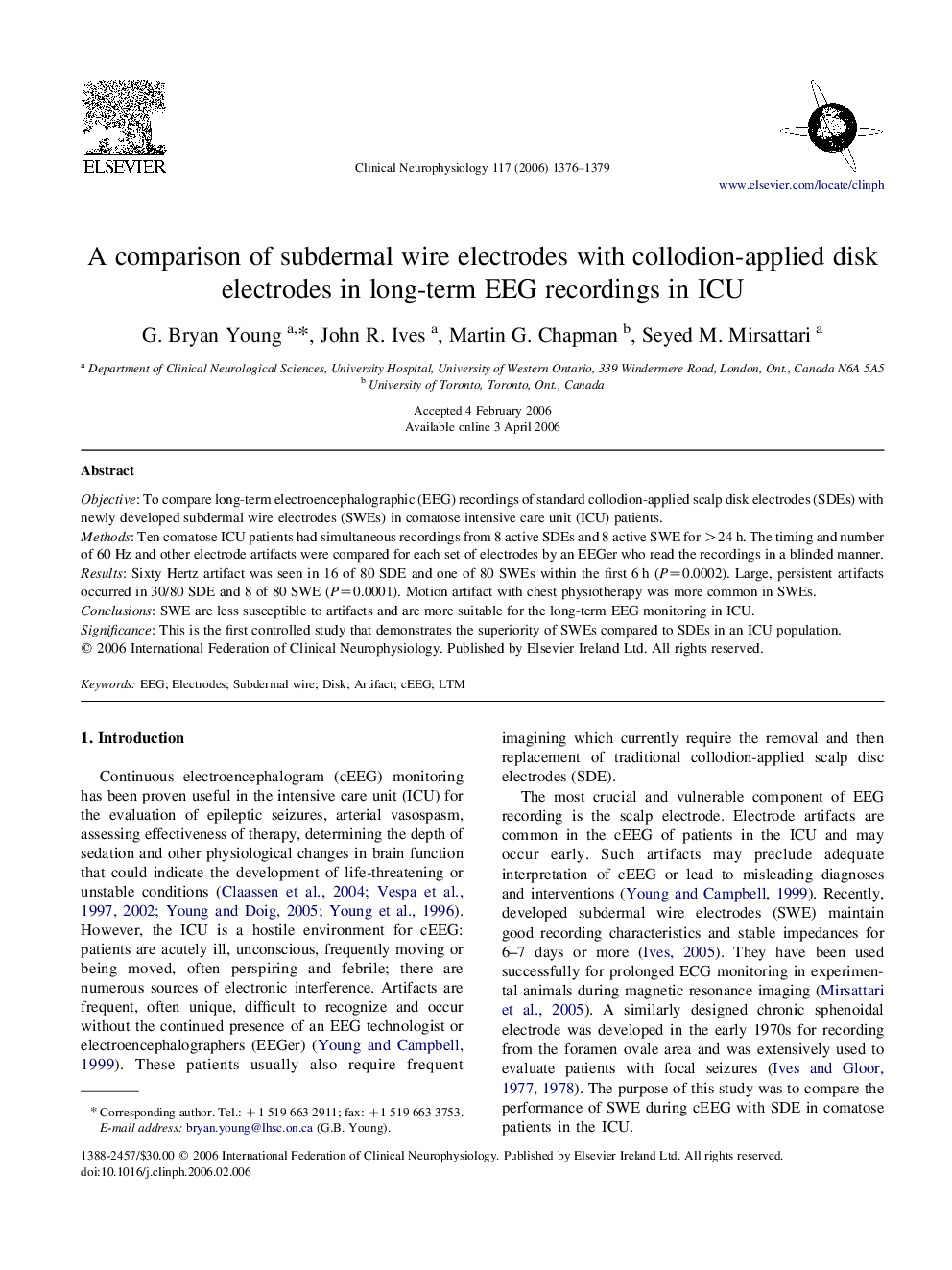| Article ID | Journal | Published Year | Pages | File Type |
|---|---|---|---|---|
| 3048747 | Clinical Neurophysiology | 2006 | 4 Pages |
ObjectiveTo compare long-term electroencephalographic (EEG) recordings of standard collodion-applied scalp disk electrodes (SDEs) with newly developed subdermal wire electrodes (SWEs) in comatose intensive care unit (ICU) patients.MethodsTen comatose ICU patients had simultaneous recordings from 8 active SDEs and 8 active SWE for >24 h. The timing and number of 60 Hz and other electrode artifacts were compared for each set of electrodes by an EEGer who read the recordings in a blinded manner.ResultsSixty Hertz artifact was seen in 16 of 80 SDE and one of 80 SWEs within the first 6 h (P=0.0002). Large, persistent artifacts occurred in 30/80 SDE and 8 of 80 SWE (P=0.0001). Motion artifact with chest physiotherapy was more common in SWEs.ConclusionsSWE are less susceptible to artifacts and are more suitable for the long-term EEG monitoring in ICU.SignificanceThis is the first controlled study that demonstrates the superiority of SWEs compared to SDEs in an ICU population.
